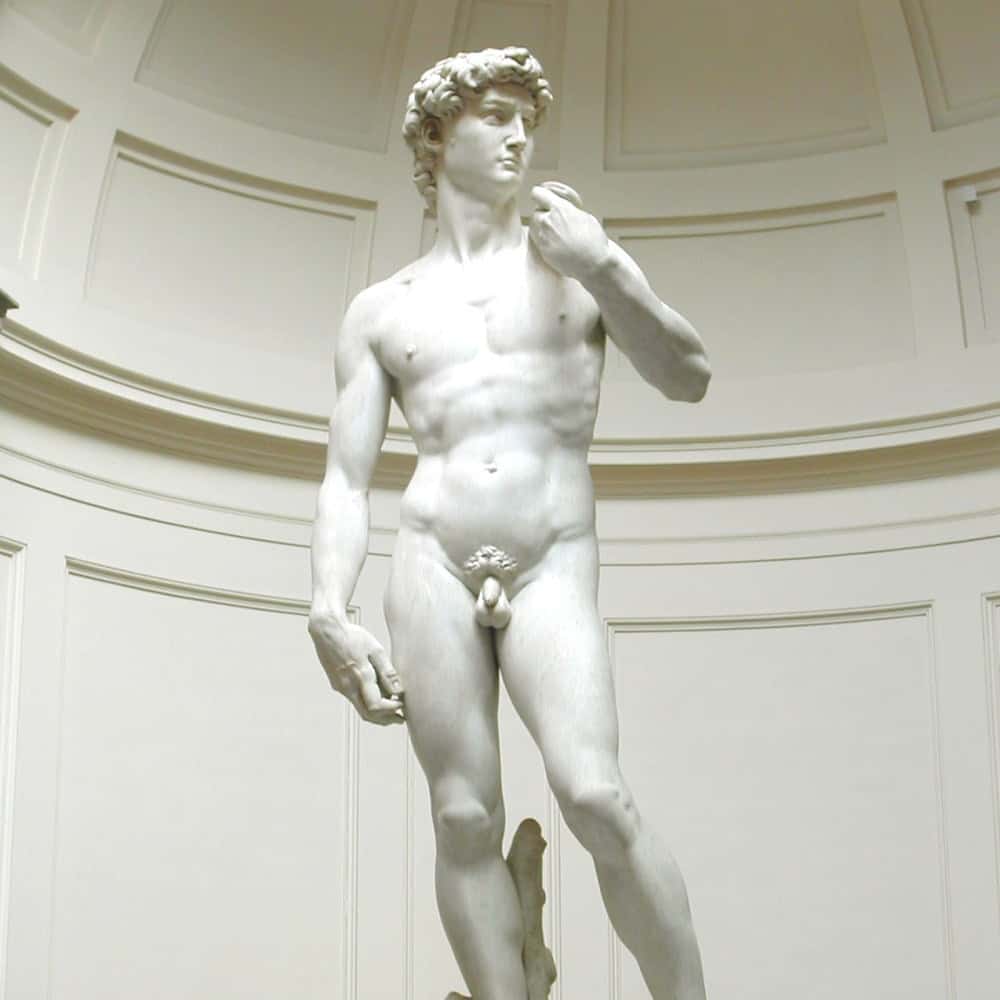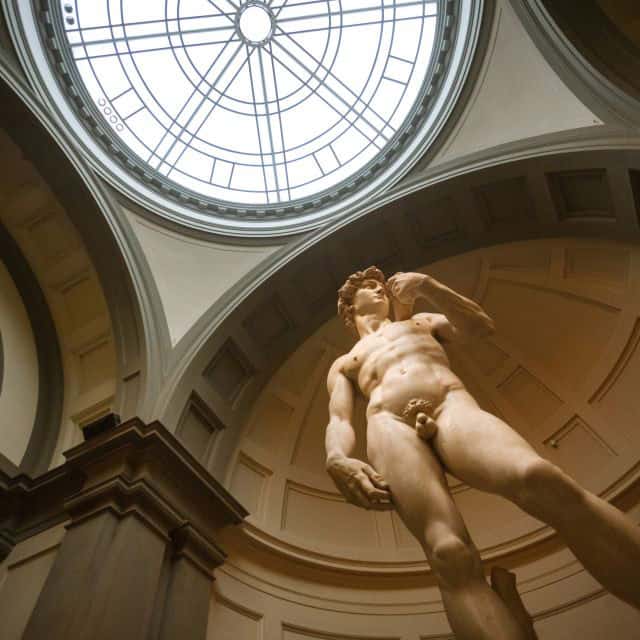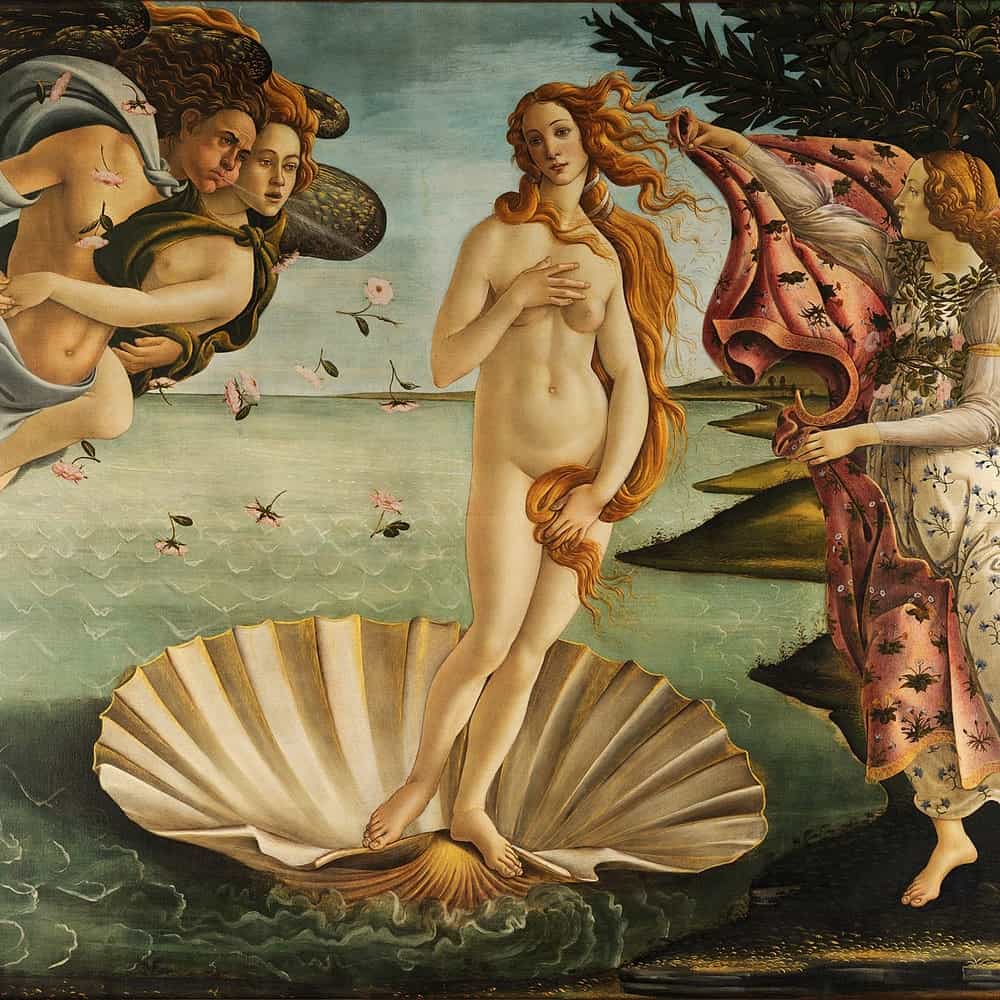Everything you need to know before visiting Florence’s Accademia Gallery, from must-see artwork to tickets.
The Accademia Gallery is one of the most visited museums in Florence but in the rush to see Michelangelo‘s original statue of David, you can easily miss all the other treasures within. As a tour guide, I’ve been to the Accademia Gallery innumerable times and I have seen first hand the looks of awe and wonder when people see David for the first time. However, he’s not the only thing in the museum! Often on a guided tour there isn’t time to see at all, which is why I’m writing this guide to include tips and tricks for how to get your tickets and skip the line and what to see once you’re inside.
Seven highlights of the Accademia gallery


1) Michelangelo’s David
The main event! Michelangelo’s David is one of the most iconic masterpieces of Renaissance art which was moved from outside the Palazzo Vecchio to the Accademia Gallery in 1873. Carved from a single block of marble, the statue depicts the biblical hero David, right before his battle with Goliath, exuding both tension and calm confidence. The statue stands 17 feet tall, showcasing Michelangelo’s extraordinary attention to anatomical detail, from the lifelike veins in David’s hands to the perfect proportions. A symbol of Florence’s own strength and independence, this statue is a powerful civic and artistic symbol that is absolutely worth the hype.
2) Michelangelo’s prisoners
Michelangelo’s Prisoners, also known as the Slaves, are a series of unfinished marble sculptures that you’ll find in the same hall as the David statue. Originally sculpted for the tomb of Pope Julius II in Rome, Michelangelo’s work was interrupted when the pope asked him to paint the Sistine Chapel ceiling instead. What you see now are the figures, twisting and turning as if struggling to be free from the stone itself, unfinished, incomplete but perhaps even more beautiful in their half-finished state. They offer a rare glimpse into Michelangelo’s creative process.

3) Michelangelo’s Palestrina Pietà
Also located in the same hall as David, the Palestrina Pietà depicts the Virgin Mary holding the body of Christ after his crucifixion. Though its authorship is debated, the incomplete sculpture shows a touching level of human suffering and divine compassion that make the case for it being an original Michelangelo. It was brought to Florence in 1939 under Mussolini’s orders, as part of a broader effort to celebrate Italy’s artistic heritage.
4) The Musical Instrument Collection
After having your tickets checked you will find yourself in a blue painted room. Head to the doorway to the right to find a collection of exceptional instruments, including an original 1690 Stradivarius violin made for the Medici and a 1650 tenor viola by Antonio and Girolamo Amati. Visitors can also find harpsichords and some of the earliest pianos ever made. 17th-century oboes and bassoons offer a glimpse into Baroque-era music. Each piece highlights the fine craftsmanship of renowned makers, reflecting the musical heritage of the Medici and Lorraine families.


5) Renaissance masterpieces
Especially if you can’t make it to the Uffizi Gallery on your trip to Florence, spend some time in the first room of the Accademia Gallery. Highlights include Perugino’s The Crucifixion, showcasing his delicate use of perspective, and Filippo Lippi’s ethereal Madonna and Child with Two Angels, known for its emotion and soft realism. Botticelli’s Madonna of the Sea is another standout, illustrating his mastery of graceful figures and harmonious compositions, making this collection a must-see for lovers of early Renaissance art.
6) Plaster casts offer insight into the artists process
After admiring the David, turn left to find the plaster cast collection which showcases detailed replicas of marble sculptures. This includes works from 19th-century artists like Lorenzo Bartolini and Luigi Pampaloni. These casts, used for artistic study, reflect the neoclassical and academic traditions that shaped Florentine sculpture during this period and helpful vidoes explain the meticulous process behind their creation.
7) Intricate Medieval art
On your way to the gift shop you’ll pass through a small collection of medieval art but this is only the beginning. After the gift shop you will find a set of stairs leading to the upper levels of the museums, empty of crowds and housing a collection of stunning altarpieces, frescoes, and panel paintings from the 13th to 15th centuries. Pieces by Giotto, Bernardo Daddi, and Andrea Orcagna offer a glimpse into the spiritual and artistic evolution of early Renaissance Florence, with vivid depictions of religious scenes and gold leaf backgrounds.
Best of Florence City Center Tour with Accademia and Uffizi
Experience the best of Florence on this private guided tour of the city center. You’ll skip the line at the Accademia Gallery to see Michelangelo’s David before taking in the highlights of the city center from the Cathedral Square to the medieval district, Signoria Square and Ponte Vecchio.
Tips and tricks to visiting the Accademia Gallery
- Get your tickets in advance to avoid a long line. Tickets sell out fast so don’t wait to the last minute. Entry must be purchased for a specific date and time.
- It’s a good idea to arrive at your entry time or within five minutes. It does not help to arrive earlier as you will just have to wait for your time.
- When you arrive, it will look very chaotic. Find the guards at the entrance who will direct you to the right place based on your type of ticket and number of people in your group.
- Expect a line to skip the line. Even though you have a timed entry to the Accademia, there usually is a short wait to get through security.
- Be prepared for security. Water is allowed but not in large glass bottles.
- Hold on to your ticket! You will show it once at the door to get into the building and once again after you go through security.
- In my experience, the best time of day to visit the Accademia is as late in the day as possible. Choose a later entry time and you might be able to enjoy the David without all the crowds.
Enjoy your visit to the Accademia, and feel free to share your favorite unexpected museum discovery in the comments!
Accademia Gallery
Via Ricasoli, 58/60
Opening Hours
Tue – Sun: 8:15am – 6:20pm
Entry fee
€16 – €2














